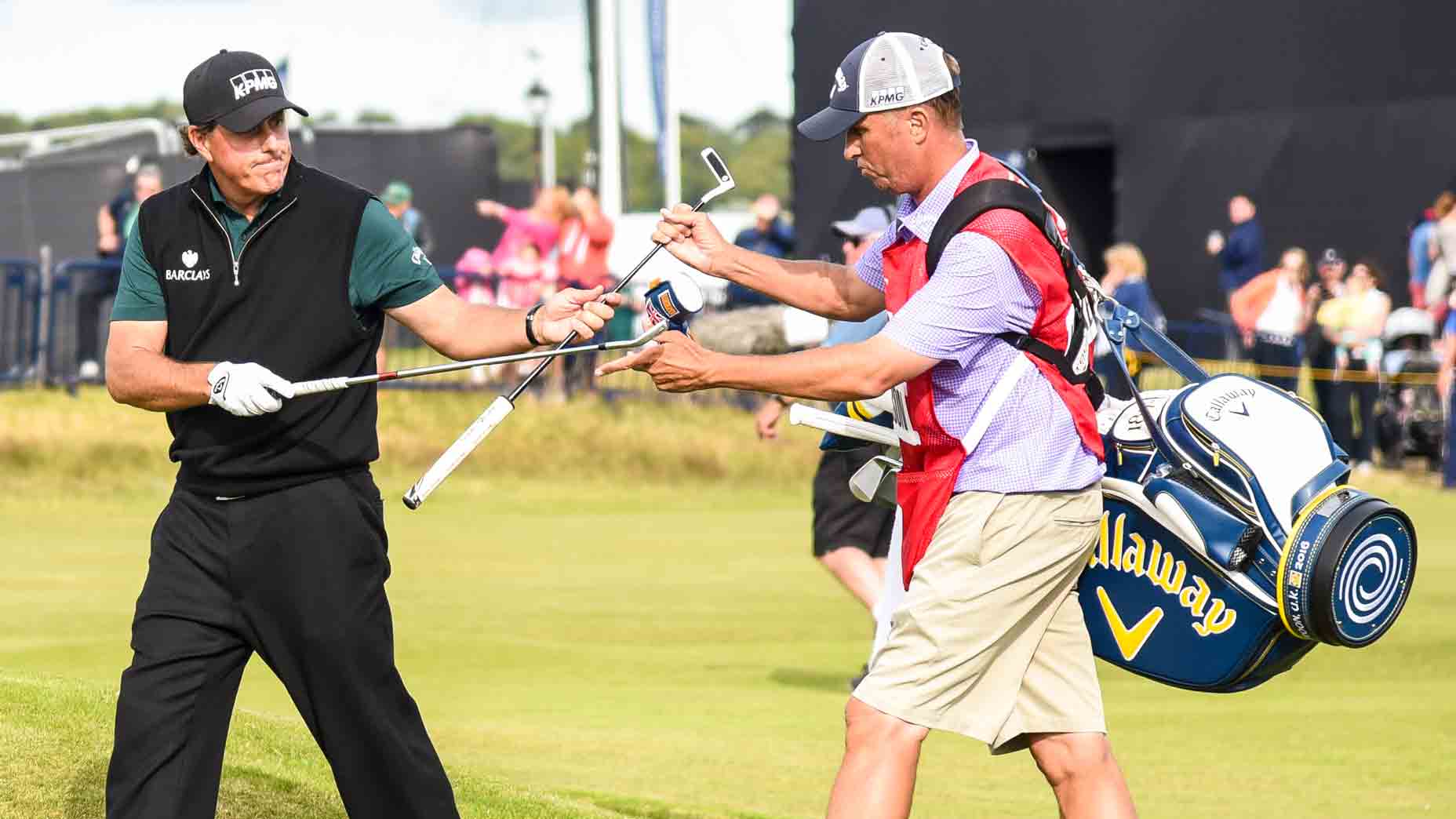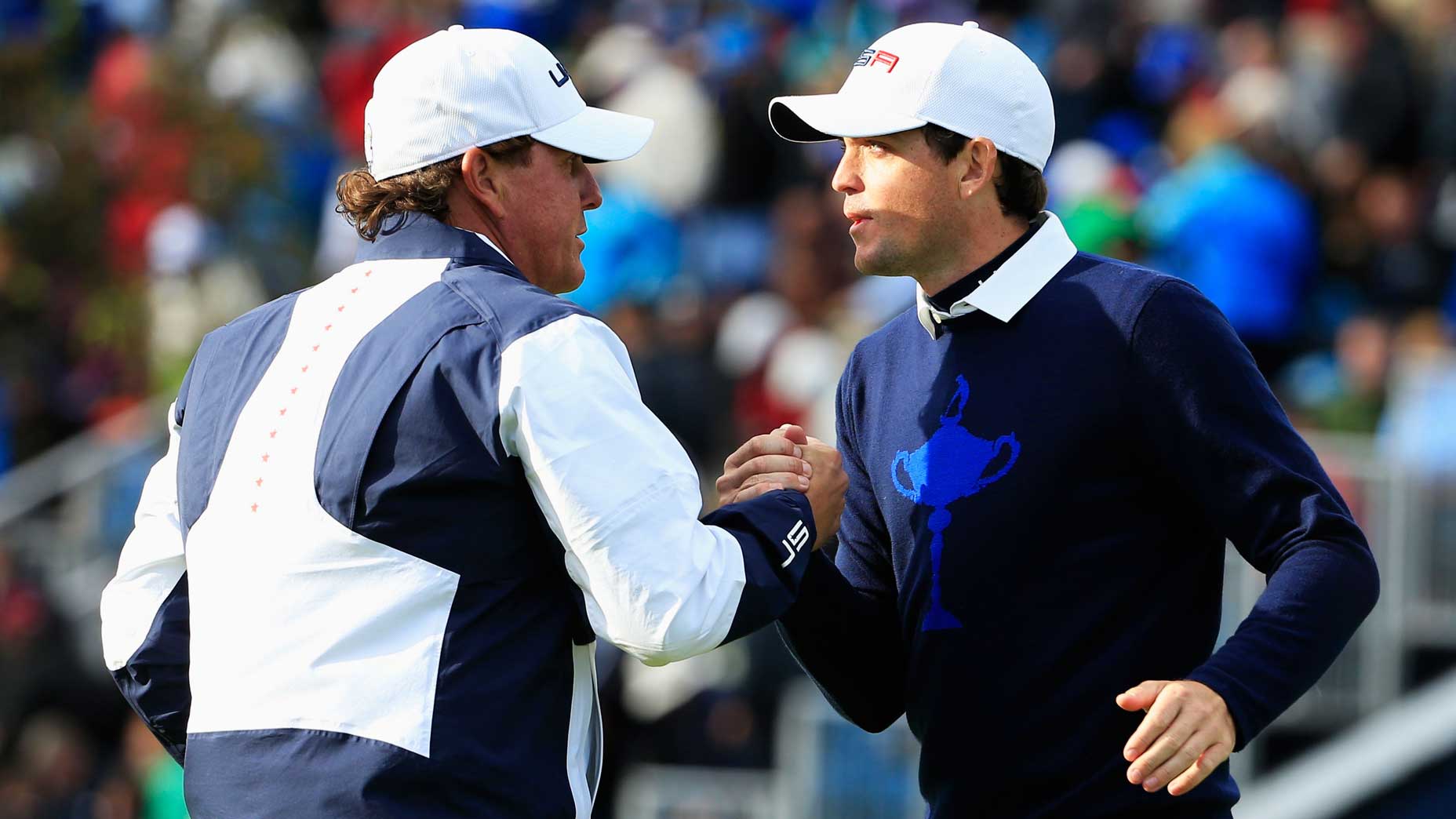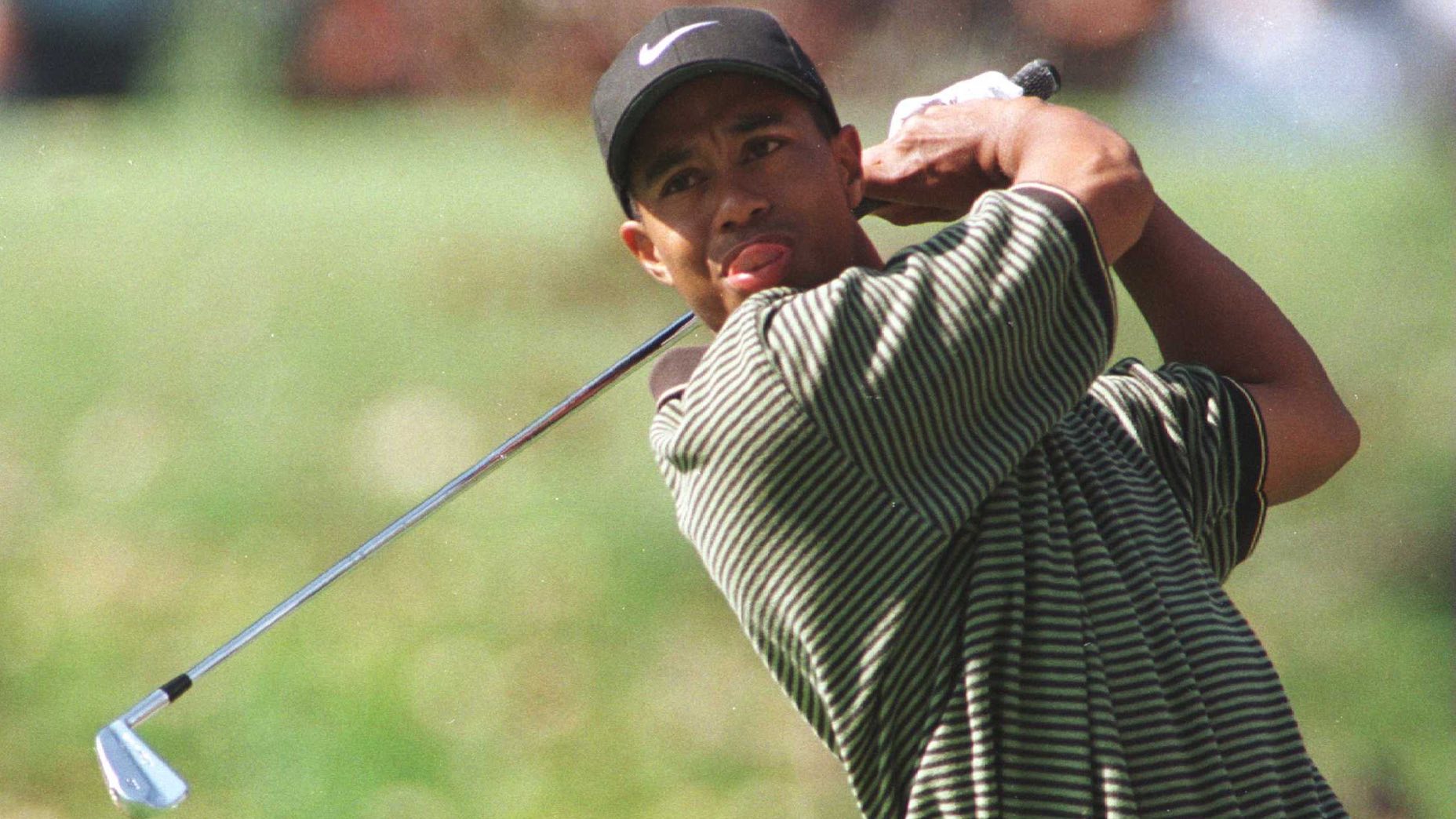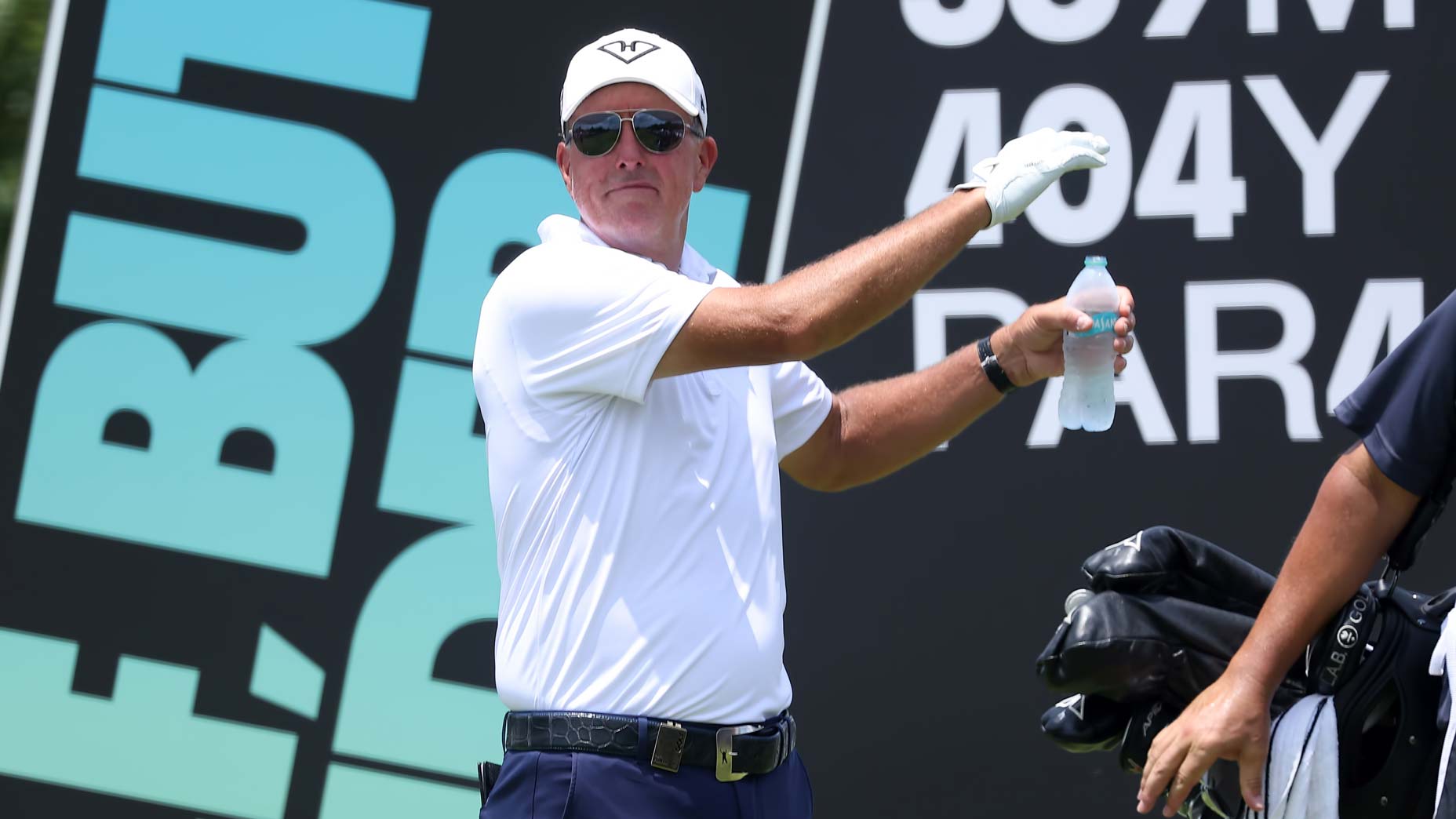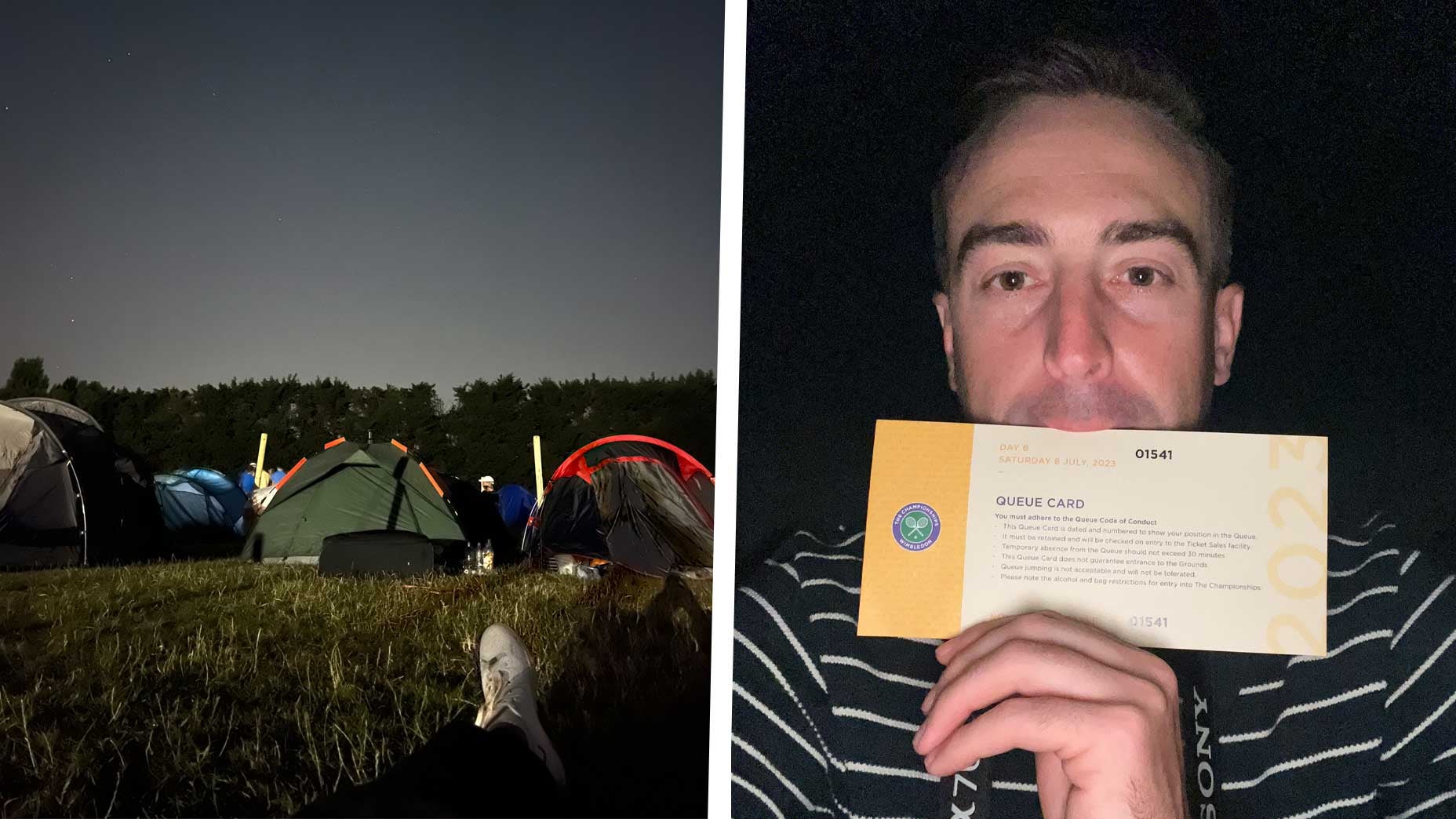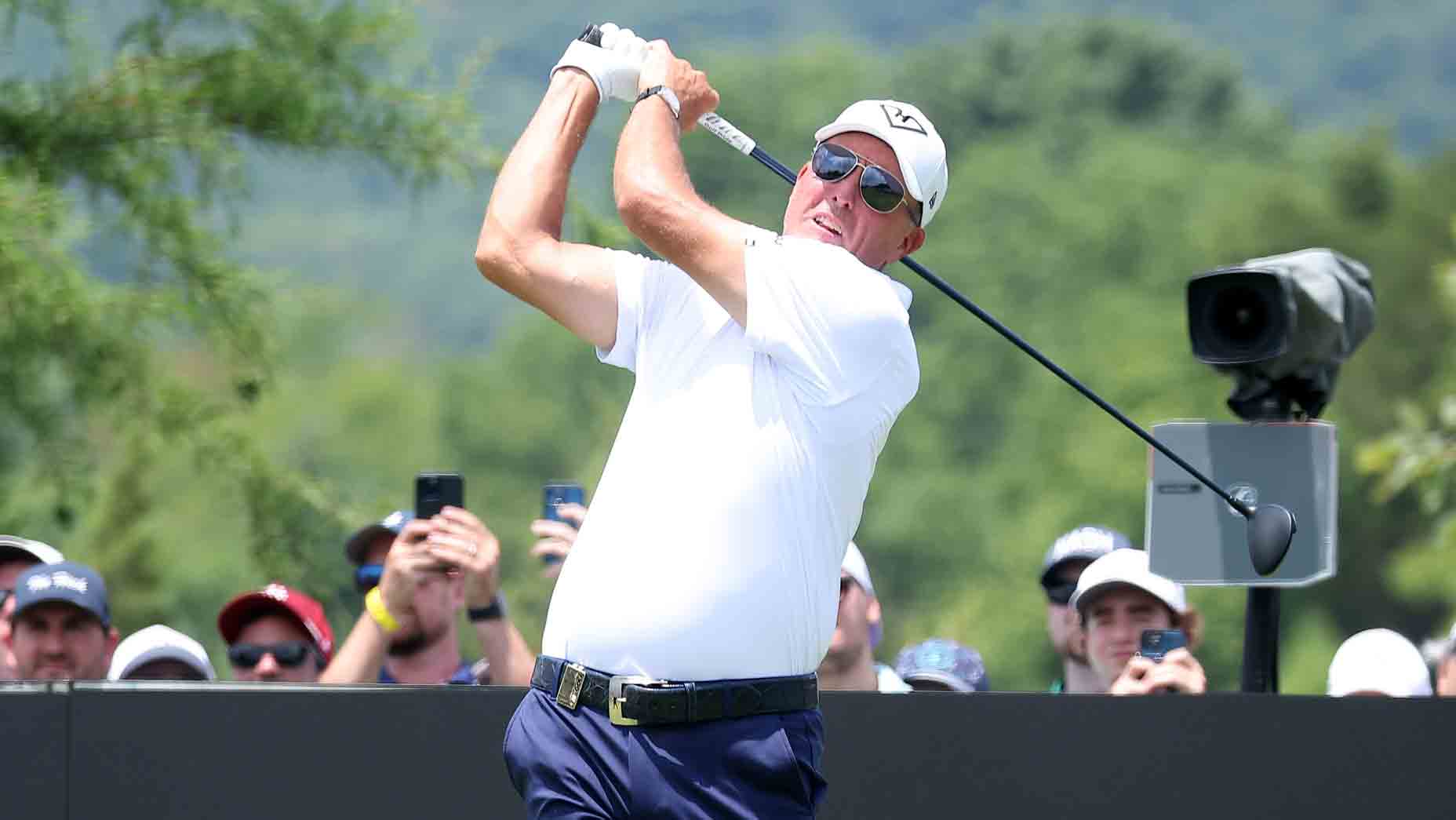In a stunning Masters performance, Phil Mickelson glimpses into the past
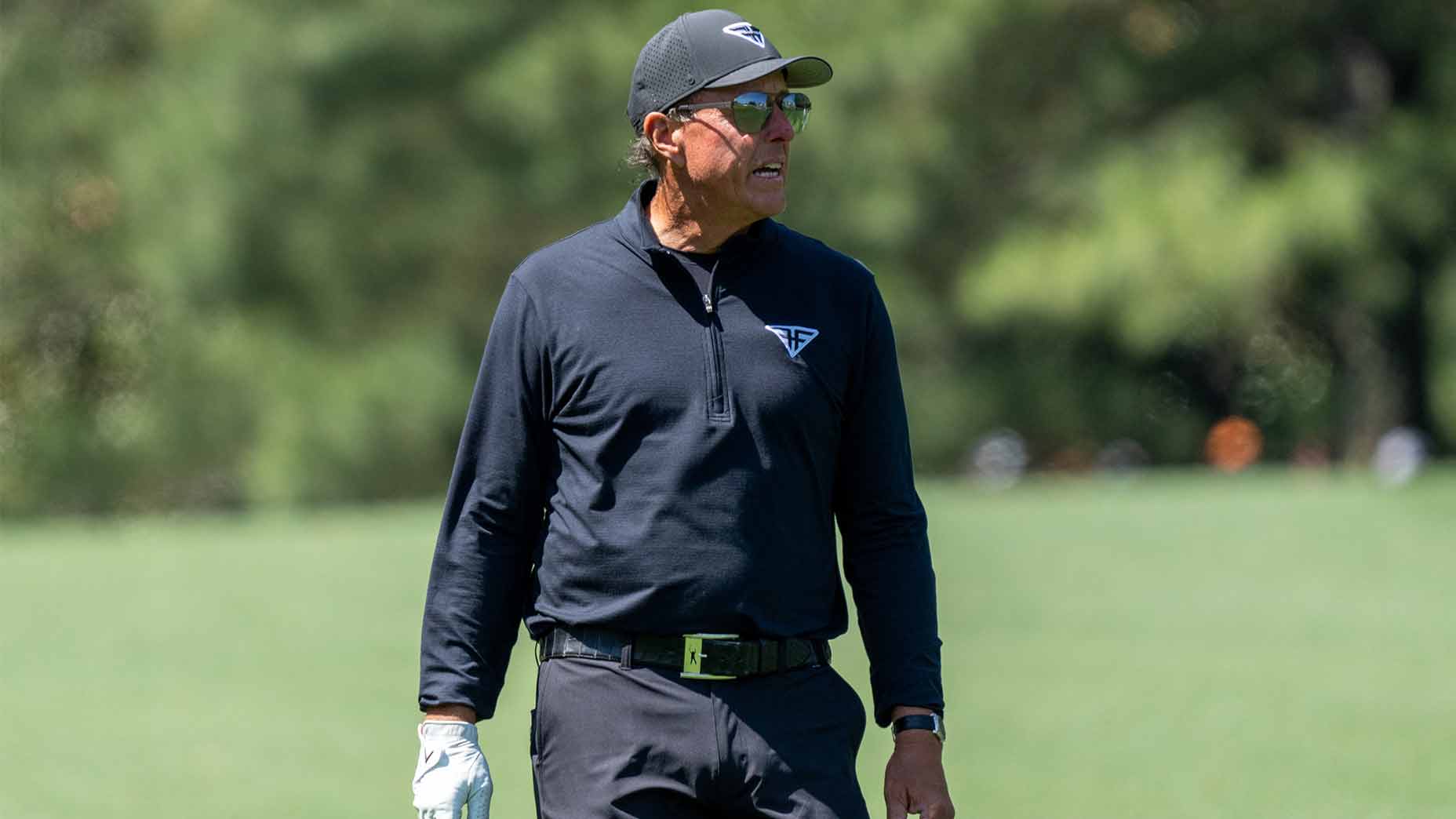
Phil Mickelson stunned the golf world with a runner-up finish at the Masters.
Darren Riehl
AUGUSTA, Ga. — There’s a memory of Phil Mickelson so old it feels like fiction.
It was Masters Saturday 2010 — 13 years before the runner-up finish that stunned the golf world this weekend — and Mickelson stepped to the 13th tee at Augusta National in need of a charge.
Phil, never the type for boring brilliance, had spent most of moving day struggling to get out of his own way; offsetting birdies on the 2nd, 3rd and 8th with bogeys on the 6th and 10th. By the time he reached the 13th, tournament leader Lee Westwood had opened a five-stroke lead, and was threatening for more.
But as the shadows grew longer across the 13th green, something awoke inside Mickelson. He ripped driver down the left side of the fairway, soaring a 7-iron over the water and to eight feet. He poured in the eagle putt and cut the deficit to three, poking out his fist as the putt sank.
The roars were loud then, but they grew deafening on the 14th, when Mickelson dropped an approach shot off the 14th green that sucked back toward the flagstick and, impossibly, fell in. He’d made back-to-back eagles, cutting the deficit from five strokes to one in an instant.
Asked later how he kept his composure following the eagles, he elected to author a bit of his own legend, a smile spread wide across his face.
“I was trying to make a third.”
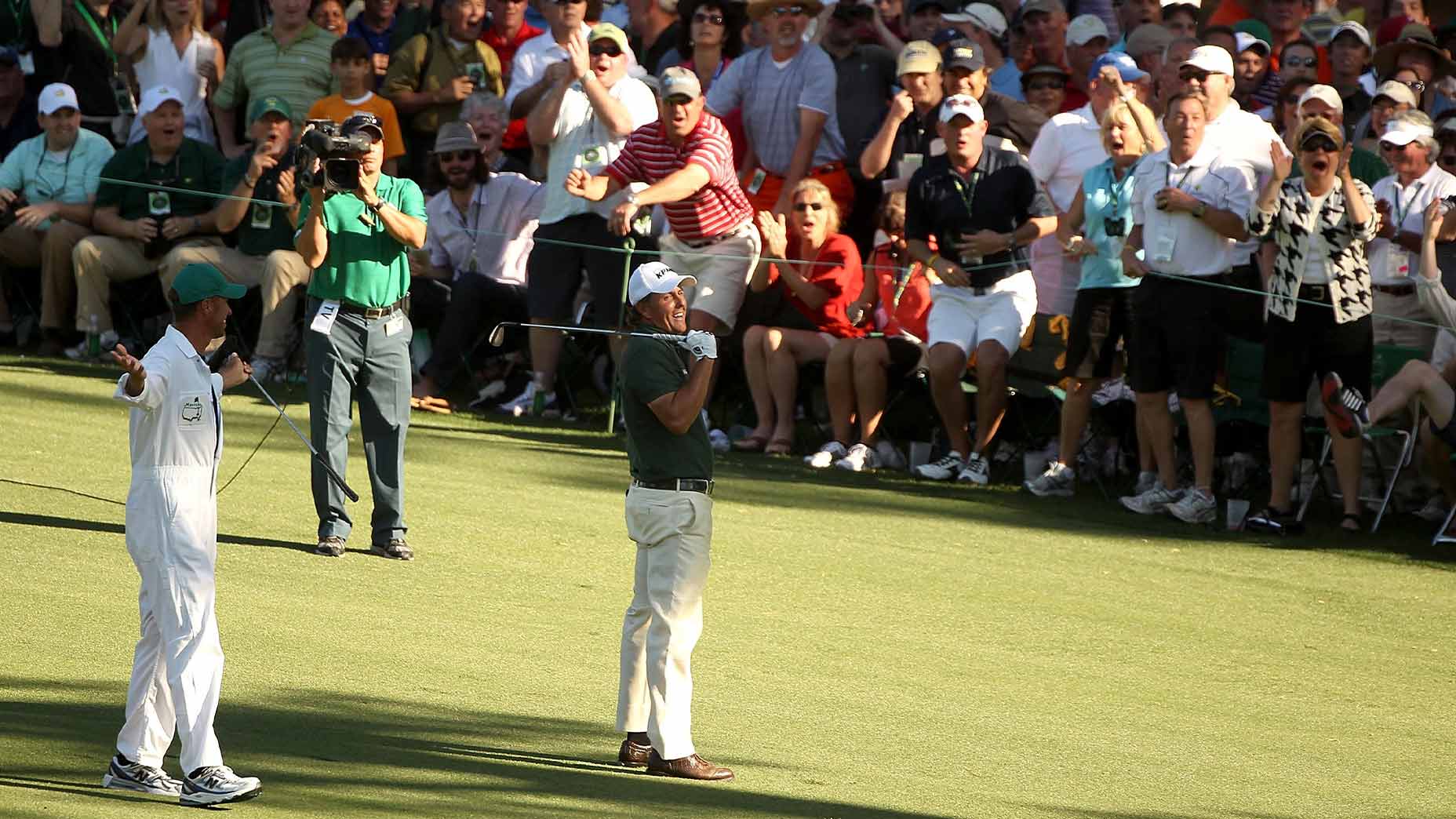
That memory was a long time ago. Before the stunning major victories at the Open in ’13 and PGA Championship in ’21, before the era of hitting bombs and coffee diets, before the controversy that imploded his professional career and led to the formation of his new, Saudi-backed employers. There have been new memories of Phil Mickelson formed since that Saturday at Augusta in 2010, including the one he forged on Sunday afternoon in 2023, when he shot a seven-under 65 to finish a shocking Masters runner-up.
“There’s kind of a calm that comes over you; the fact that we get to play and compete in this Masters, and I think we’ve all been
very appreciative of that,” he said. “I know after missing last year, to be here this year, it means a lot to me and it means a lot to me to be a part of this tournament going forward.”
It is strange to think of that golfer as the same one we saw at Augusta National this week. That golfer was an open book; this one is impenetrable. That one was a bombastic free-wheeler; this one is a tepid low-talker. That one wore a flair for the dramatic; this one wears an all-black ensemble for something called the HyFlyers.
But listen to the galleries around the course for long enough as Mickelson made his charge up the back nine Sunday — making five birdies in his last seven holes — and there’s no question it is the same man. He even looked like the same man as that 2010 vision, riding yet another red-hot second nine to cut the deficit from seven to two.
When he arrived to the 18th green, the ovation for him was as loud as for any competitor all week. The message from the Augusta faithful was clear: even for his flaws, the Masters still adores Phil. It seems the feeling is mutual.
“If you love golf, when you come here, it’s a spiritual experience, where you feel this appreciation for this great game and the gratitude that you have,” Mickelson said earlier this week. “Then this tournament, this course gives something for everybody to aspire to. If you’re a kid and you’re dreaming of playing in the Masters and you want to win it, it gives you something to aspire to. It did for me.”
It’s been longer than Mickelson would like to admit that he was a bright-eyed twentysomething gunning for his first green jacket. He isn’t a kid anymore. Hell, after the last 16 months, he can’t even claim to be a kid at heart. But make no mistake, the Masters still represents something aspirational to him. Maybe now more than ever.
“You end up having a sense of gratitude,” he said. “It’s hard not to, right? This is what we strive for.”
And why does he feel grateful? Not for the opportunity at a payday, or another green jacket. No, the thing that keeps Phil coming back is simpler than that. It’s the opportunity to find himself again. At the Masters, we saw it in glimmers — “Salty,” he said of a drive on Thursday — and also in streaks.
“I’m going to go on a tear pretty soon,” he said Friday afternoon, his eyes widening in a public setting for the first time in many, many months. “You wouldn’t think it. You look at the scores. But I’ve been playing exactly how I played yesterday, hitting the ball great, turning 65s, 66s into 77s. I’m ready to go on a tear.”
Mickelson is not the first major champion to seek a piece of past glory at Augusta National. In fact, he would be an outlier had he not desired that. But it’s the type of glory he seeks that makes him unusual. Not the kind that can be found in a green jacket victory or, strangely, quantified in a paycheck. The kind that can only be found on the faces of those around him.
As he walked up the galley between the 18th green and clubhouse on Sunday afternoon, Mickelson ran into one of those faces: Steve Loy, his caddie/agent/business partner/Arizona State swing coach. The two have been through it all together — the major-winning highs, the legacy-derailing lows, and the very many moments in between. That much was clear on Loy’s face as Mickelson approached. As Loy caught Phil’s eye for the first time, tears rolled down his face and onto his green Augusta National logoed quarter-zip. The two shared a short hug, and Loy choked out a simple message.
“I’m so proud of you.”
But whatever old magic Phil’d found out on the course was bottled back up by the time he returned back from the scorer’s room to speak with media.
As he approached the podium, he looked visibly anxious, his voice shaking as he returned his sunglasses to his face, apologizing for his sensitive eyes. He answered just three questions — citing his “hesitation” to “say much more” — and offered little more by way of details in a subsequent interview setting.
He walked away from the podium just seconds later and returned to his group of supporters, which included his wife, Amy (clad in neon-green glasses). The group shared smiles and what appeared to be a group hug before Mickelson, holding his wife’s hand, returned to the clubhouse.
They stayed there for some time, even as an idle Mercedes with his player number sat parked on Magnolia Lane. It’s hard to know what happened after that. We know what the old Phil would have done, but this Phil? It’s harder to say.
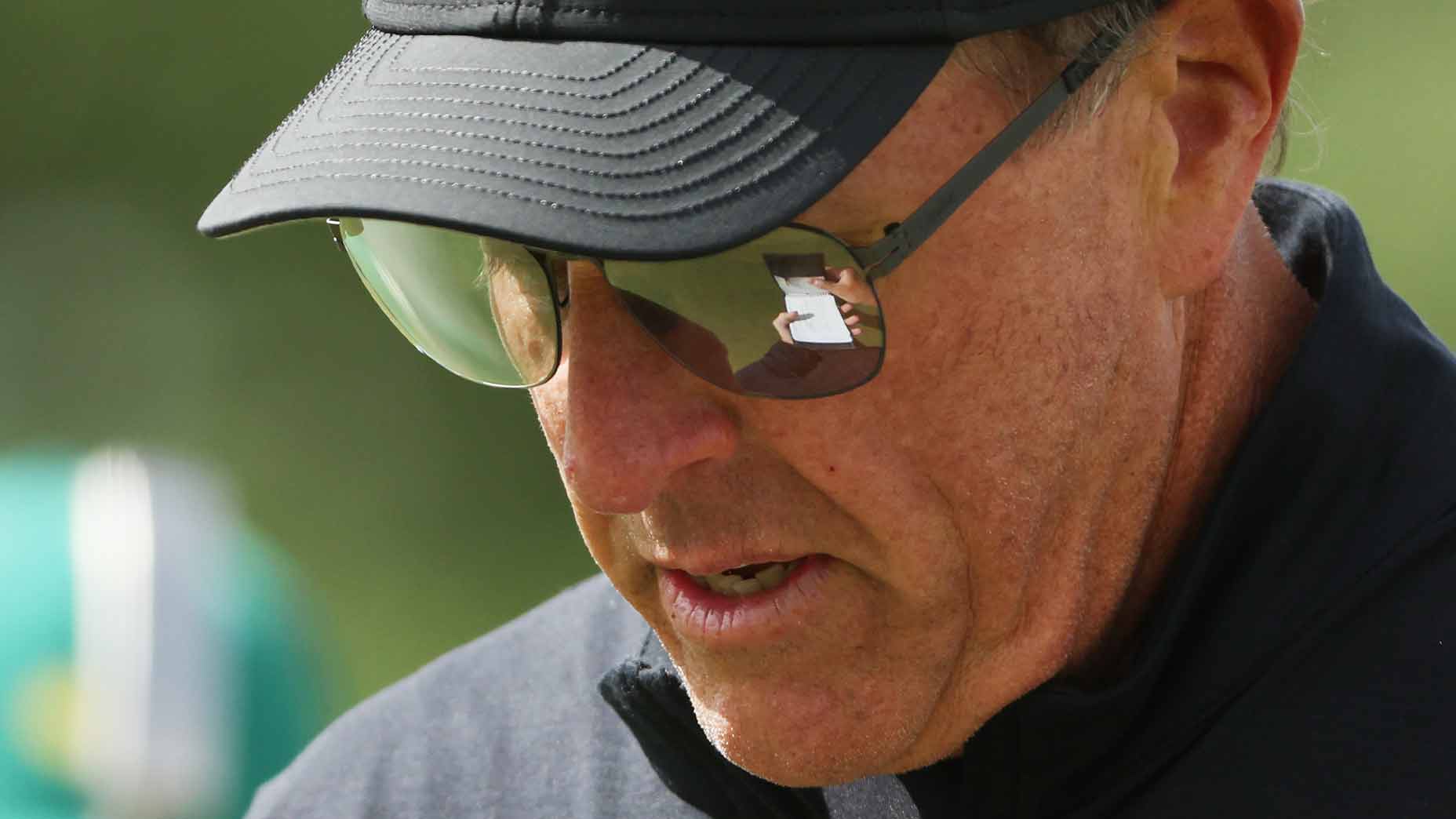
There’s a memory of the new Phil Mickelson so strange it sounds like fiction.
After a final-round 65 resulted in an unexpected tie for second at the Masters, four strokes behind Jon Rahm, Mickelson approached reporters with the chance to proclaim his official return. It was his moment of vindication — a chance to forget about the struggles of the last 18 months in a few minutes of Augusta National glory.
But asked if he saw any comparison between the golfer of today and that of his last Masters triumph — the famed back-to-back eagle victory in 2010 — Phil grimaced.
“I don’t know,” he said. “That’s hard to say.”
He paused, looking off into the distance. Finally, he spoke again.
“That was a long time ago.”
Never has that been more obvious.



